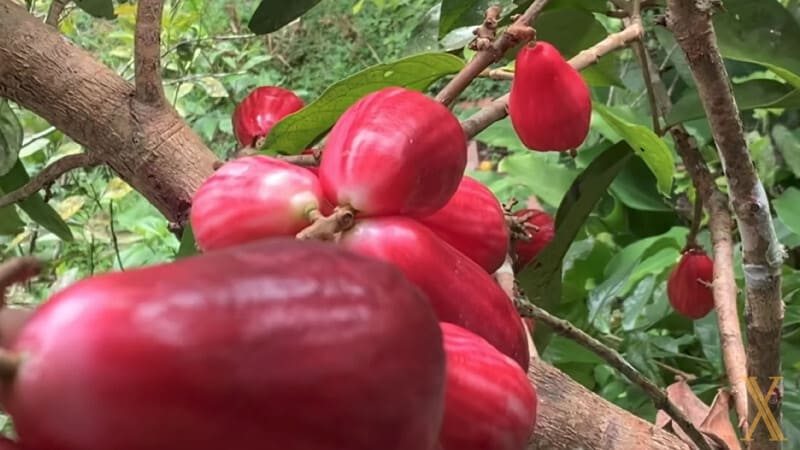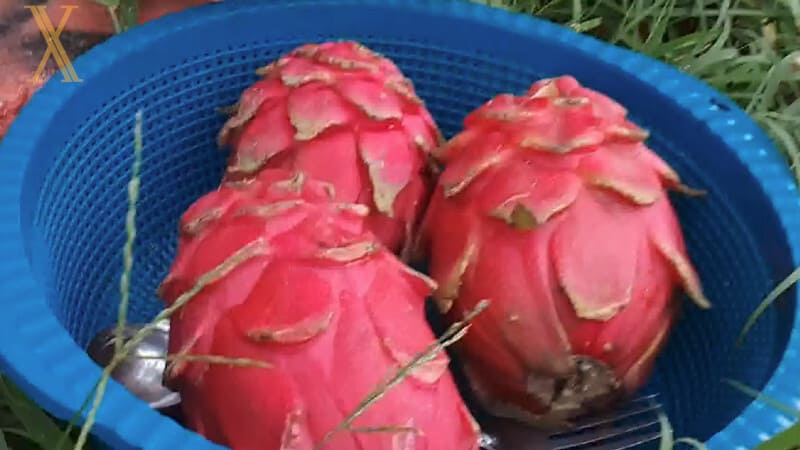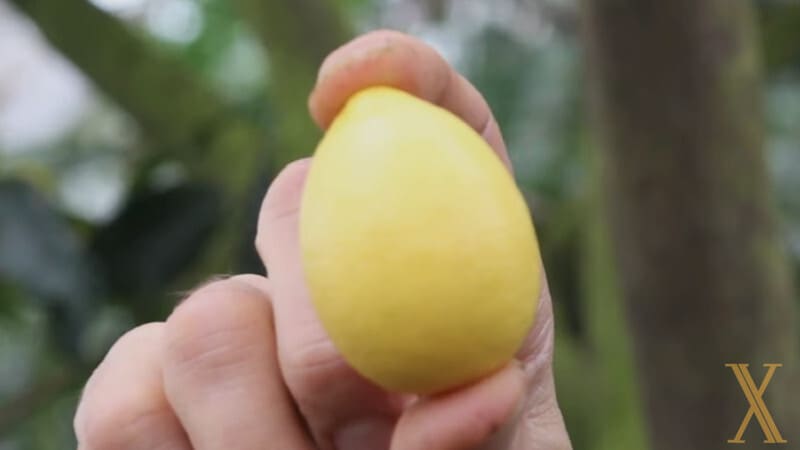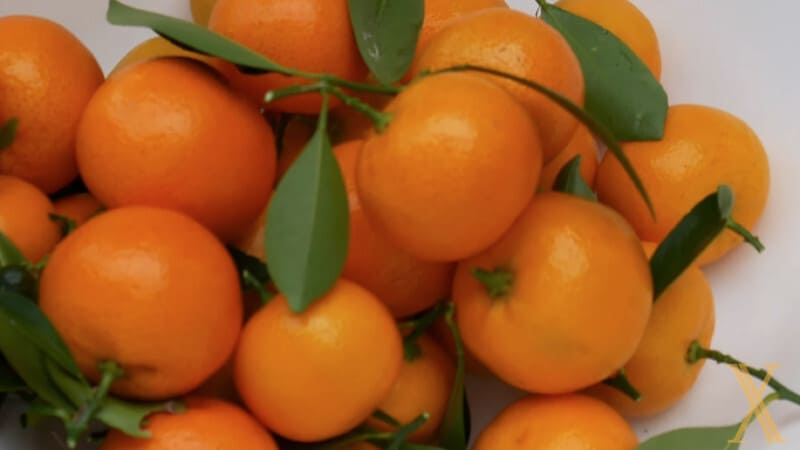
The durian is a very peculiar exotic fruit, born from a tree called Durio sivthynusm, which, depending on the species, can measure approximately 25 and 39 meters. Durian is native to Southeast Asia.
There are various opinions on the part of those who have tried it, particularly the natives who call it “the king of fruits” and enjoy its flavor; however, others consider it the most stinky fruit in the world. Its scientific name is Durio zibethinus.
The fruit’s size, flavor, and texture vary according to the type, and its shape is relatively oval. Its size is approximately 30 centimeters in diameter and with a body full of many thorns. It is essential to highlight the diversity of this fruit’s characteristics, which we will touch more deeply in the rest of the section.
Origin and Species
The name “Durian” is derived from the Malay word duri, meaning “thorn,” and mixed with the suffix “an” form the name durian. The oldest records date from around the twelfth century. In the fifteenth century, durian was often confused with soursop fruit. However, it was by the 1700s that the German botanist G. E. Rumphius published a book with sufficient and detailed information about the fruit, which put an end to the confusion.
There are thirty (30) recognized species in Malaysia, Indonesia, the Philippines, and Thailand, more than three hundred (300) with taxonomy in Thailand and 100 in Malaysia. It is essential to mention that, of the thirty (30) species, at least nine (09) are edible internally, but however it is the Zibethinus Durio the of greater availability for the global international market.
The durian tree grows in tropical forests in the wild, requires high temperatures, and needs enough water to thrive faster and with better quality.
It is fertile in spaces where up to 90% humidity. However, it will surely perish in ecosystems where temperatures are below 7°C.
Production and marketing
The local production of durian is done through grafting to reproduce and improve the quality of plants by artificial vegetative means to obtain quality seeds.
Local farmers must plant the trees in a sunny area and wait six years to harvest. Once the tree begins to bear fruit, it does so twice a year, and usually, local vendors buy the whole production.
You can get the fruits in markets, supermarkets, and streets.
The fruit originates specifically in Malaysia, Indonesia, and Borneo, with Indonesia producing the most significant volume worldwide.
However, today in Thailand, India, and other countries, you find huge farms that produce this exotic fruit to be exported to different latitudes, being China as its leading destination.
In 2019, China approved the import of frozen fruit from Malaysia, one of the leading buyers. These are processed and used in desserts, cakes, and ice cream. Sales are predominantly made online and run out quickly.
It is essential to mention that due to its popularity and demand, the durian arrives at the table of the Chinese in just 4 hours, giving them a chance to enjoy this fresh fruit.
Similarly and recently (2022), China became the largest commercial partner of Vietnam, establishing a strategic alliance to buy 70% of its fruits and vegetables, including durian, which is why it could become the second supplier after Malaysia.
Physical characteristics
The durian is considered a controversial fruit for its flavor and a peculiar smell. It is among the ten (10) rarest fruits in the world and is called the most stinky; however, it arouses a lot of curiosity. Its size ranges from 30 centimeters in diameter.
Its shape is relatively oval, and its exterior color can be green, yellow, pink, or brown.
As mentioned above, a durian tree can grow up to approximately 39 meters and last up to two hundred (200) years. However, the currently cultivated species are made through grafting, which allows their size to vary by half.
It is worth mentioning that these trees have straight drumstick trunks and oval and leafy crowns. Their leaves are spear-shaped, green at the top, and bronze on the back.
Those who grow durian mention that its flowers are unique and of great beauty, with a large amount of nectar and a strong smell. According to studies, this is mainly because of bats’ pollination, but birds and bees also participate.
These flowers appear in hanging bunches, which are large and thick to have the capacity to hold the weight of the fruit, which ranges between 3 and 8 kilos approximately.
Taste
For some, it is a nectar of the gods, and for others, it is the most disgusting fruit in the world because it has an unusual taste compared to rotten onions, turpentine, or fermented cheese. Some have dared to mention that it looks like garbage in poor condition.
Despite its peculiarity, the durian has become part of a challenge for those who visit Southeast Asia, to whom the natives offer it, to taste it and not leave without knowing the so-called King of the fruits.
Nutritional information
There are many vitamins and nutrients that it gives our body to eat some durian. It is considered a very energetic fruit. Therefore, we can ingest it to start the day.
The table shows what type and amount of nutrients the durian gives us.
| Component | Quantity in 100g |
| Calories | 147 kcal |
| Fats | 5.33 gr |
| Fibre | 3.8 gr |
| Carbohydrates | 27.1 gr |
| Proteins | 1.47 gr |
| Water | 64.99 mg |
| Phosphorus | 39 mg |
| Calcium | 6 mg |
| Potassium | 436 mg |
| Sodium | 2 mg |
| Magnesium | 30 mg |
| Vitamin B3 | 1.1 mg |
| Vitamin B9 | 36 mg |
| Vitamin A | 44 IU |
| Vitamin C | 19.7 mg |
Properties and benefits
Among the multiple properties and benefits that the day gives us, we can name: the reduction of cholesterol, therefore, prevents cardiovascular diseases, improves the cognitive process, as well as fights migraine and prevents bone diseases, and regulates the level of sugar; Although it is not highly recommended for people who have diabetes.
This fruit is rich in magnesium, potassium, and sodium, so in addition to helping with the bone and muscle system, it guarantees the creation of red blood cells in the bloodstream, which is why it allows the proper functioning of blood pressure.
On the other hand, it gives us a massive contribution as an antioxidant, which in turn slows aging, contributing to the reduction of male infertility and preventing osteoporosis in women. In the same order, durian helps with digestion because it protects the mucosa of the colon, fights insomnia and anemia, and is also considered to have high aphrodisiac properties.
Uses
The durian is an exotic fruit currently being exported to countries like China, where they are giving them an exciting utility in the area of gastronomy and pastry. This is marketed by the company Alibaba, and based on that farmer’s comment, “the official export of durian promises a bright future for us.” Durian is a fruit that gives us excellent health, wellness, and, obviously, food potential.
There are many ways in which durian can be used, in ice cream, smoothies with other fruits, as protein in savory dishes, frozen and fresh, among others.
There are many stories about durian, which, despite its controversial flavor, it is said that, when tasting it, you feel a need to continue eating it, and you can not stop; that is, it has an addictive element at the moment.
Here are some recipe ideas:
- Cheesecake with durian.
- Durian cake.
- Durian milkshake.
- Durian ice cream.
- Durian cookies.
Pulp
The pulp of the durian is sweet and has a mixture of flavors such as almond, garlic, vanilla, and caramel. These are the multiple descriptions of those who have tasted this fruit. Its pulp can be orange, yellow, or red, depending on the color of its flower, and so will the color of its pulp they mention.
Shell
The shell is green with thorns, which is why you must handle it with gloves and carefully when harvesting, packing, or cooking.
On the other hand, among the various qualities of the “King of fruits,” it has also begun to be used in health. A group of scientists from Nanyang Technological University (NTU) were dedicated to extracting the cellulose powder from the shells and have mixed it with glycerol to turn them into a soft hydrogel, to then be turned into strips of antibacterial bandages. [1]
Want to see more content? Check out the following posts.
[1] https://www.magonlinelibrary.com/doi/full/10.12968/jowc.2021.30.5.330





